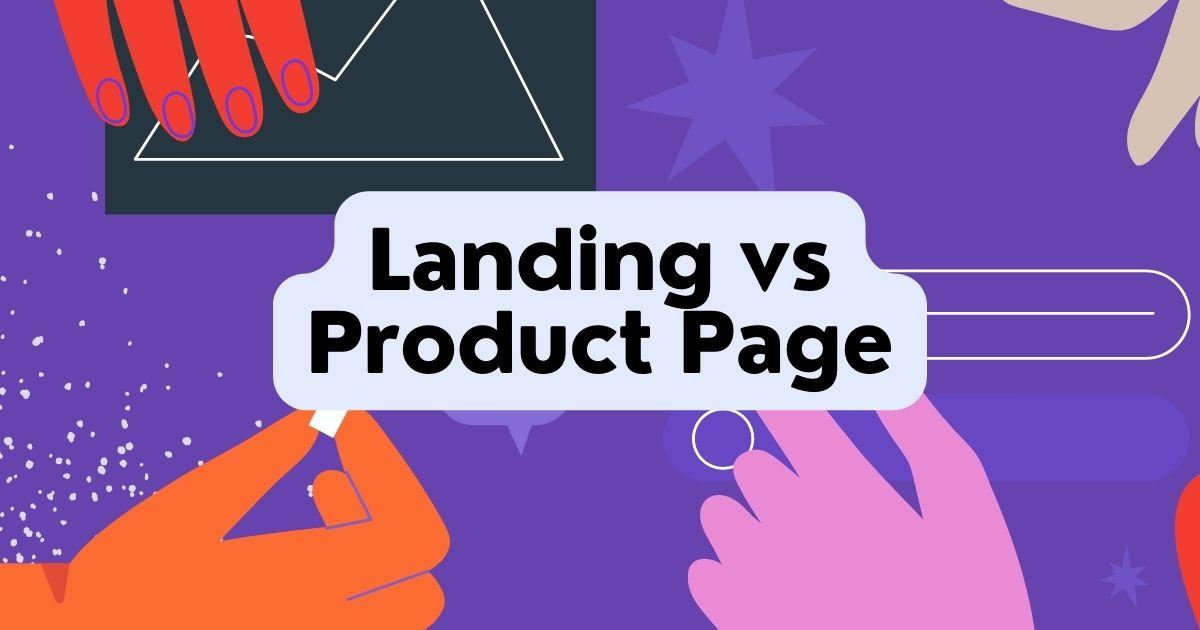Learn the differences between landing pages and product pages in eCommerce and gain insights on when to use each strategy to optimize conversions in this comprehensive guide. Limit distractions, highlight benefits, use clear CTAs, implement social proof, and optimize for mobile to optimize your landing pages and product pages. Gain a sense of urgency by creating limited-time offers or counting down stock. Leverage remarketing and improve quality scores to increase conversions, and align ad messaging with landing page or product page content to create a frictionless experience for visitors.
Every eCommerce business wants to maximize its online sales potential. In doing so, business owners and marketing professionals often face the dilemma of whether to direct customers towards their eCommerce landing pages or product pages. In this comprehensive guide, we will explore the differences between landing pages and product pages, as well as provide insights on when to use each strategy to optimize conversions.
Definition of Landing Pages and Product Pages
A landing page is a standalone web page designed specifically for a marketing or advertising campaign with a single goal – to convert visitors into leads or customers. Landing pages are typically used for limited time promotions or a specific product or service, and their content is tailored towards the conversion goal.
A product page, on the other hand, is a page dedicated to showcasing and providing information about a specific product that an eCommerce store offers. It includes product descriptions, specifications, pricing, and images, and is designed to entice users to purchase the product.
When to Use Landing Pages vs Product Pages
Choosing between a landing page or product page primarily depends on the goal of your marketing or advertising campaign. If your goal is to promote a specific product or service with a limited-time offer or discount, then a landing page is the way to go. The focus of the landing page should be on the promotion or offer and pushing visitors to take action.
If you’re running a long-term campaign or simply showcasing a product, then a product page is the better option. The focus should be on the product and providing as much information as possible to convince visitors to make a purchase.
Pros and Cons of Landing Pages vs Product Pages
Landing pages have the advantage of being focused solely on a specific conversion goal. They are designed to provide a frictionless experience for visitors, minimizing distractions in order to encourage them to take action quickly. However, landing pages may not offer enough information for visitors to make an informed decision, and they can come off as too salesy and turn off potential customers.
Product pages, on the other hand, provide more information to educate potential customers on a product, including its benefits and specifications. They also allow customers to explore other products on your website and potentially make additional purchases. However, they can be overwhelming with too much information and links, leading to indecision or distraction from the main goal of converting the customer.
Best Practices for Optimizing Landing Pages and Product Pages
- Limit distractions: both landing pages and product pages should have a simple and clean design, without any unnecessary links or distractions that could take visitors away from the conversion goal.
- Highlight benefits: Whether it’s a promotion on a landing page or showcasing a product on a product page, highlight the key benefits in a clear and concise manner to catch the visitor’s attention.
- Use clear CTAs: Both landing pages and product pages should have a clear and bold call-to-action (CTA) that stands out and encourages visitors to take action.
- Implement social proof: Including customer reviews and testimonials can increase trust and provide social proof, which can lead to higher conversions.
- Optimize for mobile: With more and more users accessing eCommerce websites on their mobile devices, it’s essential to make sure both landing pages and product pages are mobile-friendly and optimized for smaller screens.
Creating a Sense of Urgency on Landing Pages vs Product Pages
Creating a sense of urgency can be effective in both landing pages and product pages. On a landing page, highlighting a limited-time offer or a countdown clock can entice visitors to take action quickly to avoid missing out on the deal. Product pages can also use urgency tactics by highlighting limited stock or a sale that’s ending soon.
Case Studies of Successful Landing Pages and Product Pages in eCommerce
Here are some examples of successful landing pages and product pages:
- Landing Page Example: Airbnb’s landing page for their referral program is simple and to the point, with an eye-catching CTA and clear benefits for both the referrer and the referral.
- Product Page Example: Apple’s product pages are known for their clean design and high-quality images, which showcase the product and its features in an appealing and informative way.
Leveraging Remarketing with Landing Pages and Product Pages
Remarketing can help re-engage visitors who have previously visited your website but left without making a purchase. By using targeted landing pages or product pages, you can create customized ads that speak directly to their previous interaction with your website, increasing the likelihood of conversion.
Optimizing PPC Landing Page and Product Page Quality Scores
Quality scores are used by PPC advertising platforms to determine the cost and placement of ads. By optimizing landing pages and product pages, you can improve the quality score and potentially reduce the cost of advertising, while also increasing the likelihood of conversions.
Aligning Ad Messaging with Landing Page or Product Page Content
It’s important to ensure that there is alignment between the messaging in your ads and the content on your landing pages or product pages. This helps to improve the visitor’s experience and minimizes confusion or friction in the conversion process.
